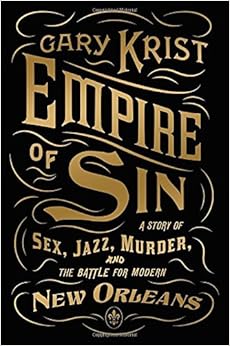The first notable thing about Gary Krist's new book, Empire of Sin: A Story of Sex, Jazz, Murder, and the Battle for Modern New Orleans, may be its subtitle. The main title speaks of sin, yet between sex and murder lies jazz. Jazz?
Well, yes. It turns out that when reformers tried to clean up New Orleans early in the last century, their first target was not prostitution, gambling, booze, corruption or even gangland murders, but dancing. They didn't want women, at least not white women, in places where that new music, sometimes called jazz and sometimes jass, was being played by black musicians. Jazz, played by the likes of Jelly Roll Morton and a still very young Louis Armstrong, drew white audiences to clubs where black musicians played, and reformers found this as objectionable as anything else that was going on in Storyville.
An editorial in the Times-Picayune called "jass" a "form of musical vice" and said, "Its musical value is nil, and its possibilities of harm are great."
Storyville, named for Sidney Story, a New Orleans alderman, was a district of the city where vice was officially tolerated for a number of years. There was also a smaller area that became known as Black Storyville, but black musicians and a few black prostitutes were permitted in Storyville, just not black clientele. The area flourished and fortunes were made by those who owned the businesses, but Storyville was eventually crushed by those seeking reform. Prohibition, which became federal law at the close of World War I, put the final nail in Storyville's coffin. This did not end the sin in New Orleans, of course. It just went into hiding.
Most of the best jazz musicians fled New Orleans, finding more tolerant audiences in Chicago and elsewhere.
As for murder, there was plenty of that in New Orleans at the turn of the century, much of it associated with Italian mobsters. The most feared murderer at the time, the so-called Axeman, was never caught, and his identity remains a mystery to this day, although Krist suspects those killings, too, were mostly gang-related. A burly man broke into homes in the middle of the night and attacked people in their beds with an axe. Most, but not all, of the victims were Italians who owned small grocery stores.
Books about sin and the city have a lure, just like sin and cities themselves. I am thinking particularly of Karen Abbott's Sin and the Second City and Erik Larson's The Devil in the White City, both about Chicago. Krist himself wrote City of Scoundrels, also about Chicago. And just a couple of days ago I saw a similar book about Steubenville, Ohio. Empire of Sin may not be the best book of this kind, but it does make fascinating reading.

No comments:
Post a Comment